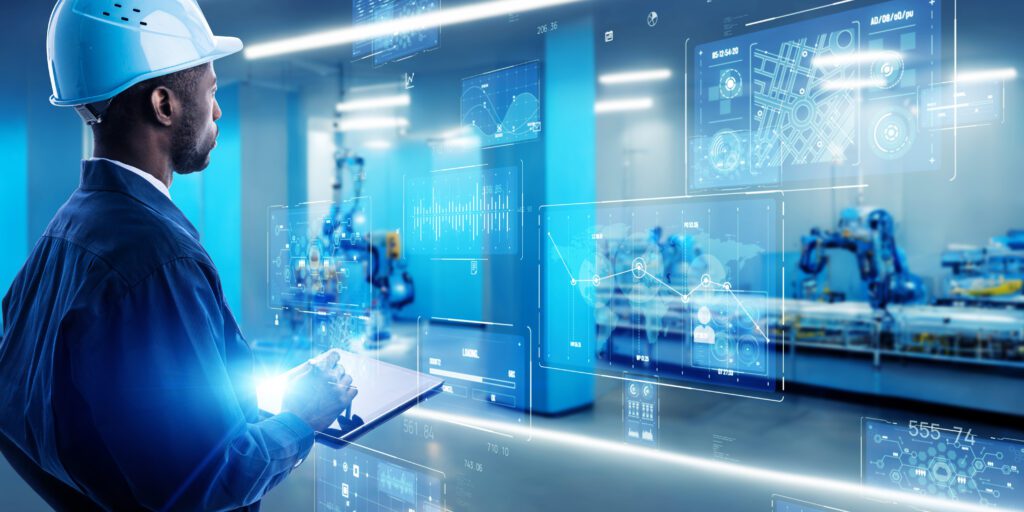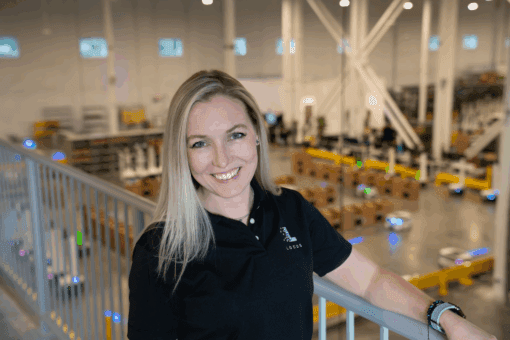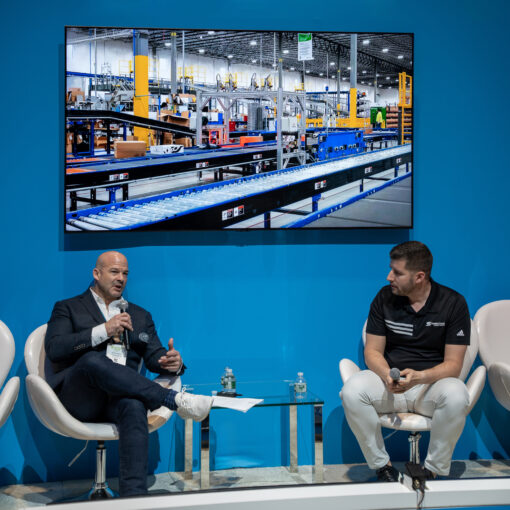WP: How to achieve 400 UPH with Locus Fast Pick
WP: How to achieve 400 UPH with Locus Fast Pick Download Now!
What’s the Future of Warehouse Automation? Industry Leaders Speak Out
Mary Hart, Sr. Content Marketing Manager

What does the future of warehouse automation look like? To find out, I’ve been asking that question to each person I’ve interviewed on my “Warehouse Automation Matters” podcast. The answers cover the various ways that warehouses plan to operate in a competitive industry, including robotics, artificial intelligence (AI), and other advanced technologies.
Embracing the Right Technology
One of the key challenges in present and future warehouse automation is selecting the right technology that aligns with specific operational needs. As Jordan Frank of Zion Solutions Group highlighted on the podcast, the first hurdle is ensuring that the technology chosen truly addresses the particular challenges of the warehouse. With so many options available, it's easy for companies to be swayed by the latest trends without fully understanding how these tools integrate into their existing processes.
Drew Eubank, also from Zion Solutions Group, emphasized the importance of education in overcoming the "shiny object syndrome," where companies are tempted by flashy new technologies without considering their practical applications. Instead, he advocates for a thorough understanding of the warehouse's current operations, limitations, and long-term goals before implementing new solutions.
Shifting to Collaborative Robotics
The discussion around warehouse automation has evolved significantly over the past few years. Kevin Lawton, host of The New Warehouse podcast, noted that the industry has moved away from the concept of fully automated, lights-out warehouses toward a current and future focus on collaborative robotics. These systems are designed not to replace human workers but to work alongside them, enhancing their capabilities and allowing them to accomplish more with less effort.
Lawton's observations reflect a broader industry trend: the realization that human workers remain indispensable in warehouse operations. Collaborative robots, or "cobots," are increasingly being used to take over repetitive, physically demanding tasks, freeing human workers to upskill and focus on more complex and value-added activities.
Scaling Up for Future Success
For warehouse automation to be truly effective, it must be scalable and flexible. This is particularly important for businesses like Fleet Feet, which manage both direct-to-consumer (DTC) and business-to-business (B2B) operations. As Anthony Pendola, Senior Manager of Distribution at Fleet Feet, explained on the podcast, integrating Locus Robotics' autonomous mobile robots (AMRs) allowed his team to significantly improve their order fulfillment process. By breaking down large weekly orders into smaller, more manageable daily shipments, Fleet Feet was able to increase efficiency and reduce the physical strain on their employees.
Pendola also noted the importance of involving the team early in the implementation process to ensure a smooth transition. Initially, there was skepticism among workers about how the introduction of robots would impact their roles. However, with proper communication and training, the team quickly embraced the new technology, appreciating how it made their jobs easier and safer.
The Role of AI and Machine Learning
Artificial intelligence (AI) and machine learning are poised to play an increasingly central role in warehouse automation. As Eubank and Frank discussed, AI can help optimize pick paths, improve cycle times, and enhance overall efficiency without introducing entirely new technologies. This represents a significant opportunity for warehouses to boost productivity with their existing infrastructure.
However, it's important to distinguish between true AI and what Eubank referred to as "marketing AI" — technologies that are often labeled as AI but are merely advanced algorithms. True AI has the potential to learn and adapt to new situations, providing continuous improvements in efficiency and effectiveness. As AI technology matures, we can expect to see even more sophisticated applications in the warehouse environment.
Looking Ahead: The Warehouse of the Future
So what does the future hold for warehouse automation? According to industry experts, we can expect to see a continued expansion of flexible, scalable automation solutions. Zion Solutions Group predicts that more warehouses will adopt proven technologies like Locus Robotics, which have demonstrated their value in diverse environments.
Lawton envisions a future where humanoid robots become more common in warehouses, taking on tasks that require greater flexibility and adaptability. These robots could potentially work alongside humans, learning new tasks quickly through AI-driven training programs. However, there is still some skepticism about the practical applications of humanoid robots, and it may take several years before they become a standard feature in warehouses.
John Santagate, Senior Vice President of Robotics at Körber Supply Chain Software, also emphasized the importance of flexibility in automation. He explained how the ability to scale up or down depending on demand is crucial for businesses to remain competitive. This flexibility is not only about handling peak seasons but also about being prepared for future growth and changes in market conditions.
Staying Human in Automation
While technology continues to advance at a rapid pace, the human element remains central to successful warehouse automation. As both Eubank and Lawton pointed out, automation should not be about replacing workers but about enabling them to do their jobs better. By focusing on the collaboration between humans and robots, companies can create more efficient, safer, and more productive warehouse environments.
For those considering starting their automation journey, the advice from these industry leaders is clear: take the time to understand your specific needs, involve your team early, and be open to learning and adapting as you go. The future of warehouse automation is bright, but it's a future where humans and technology must work together to achieve the best results.
Listen to all episodes of Warehouse Automation Matters to hear the full insights into warehouse automation from industry experts.




